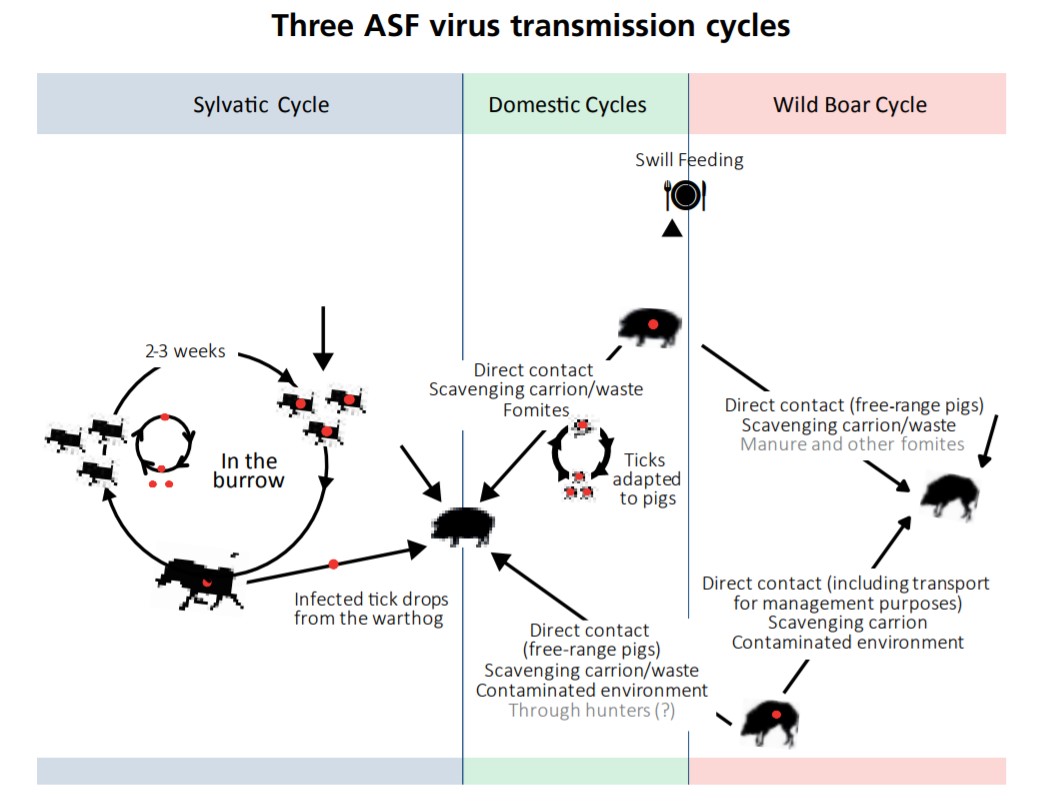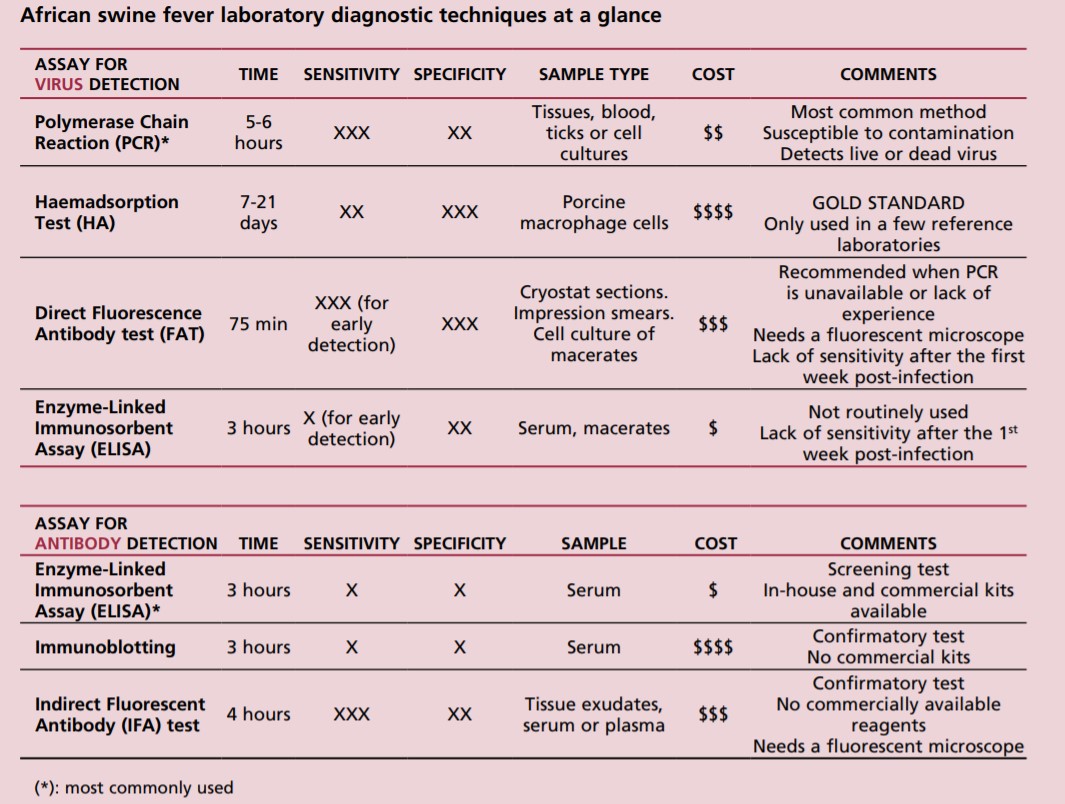The pig’s distribution in the world
Largely due to the increase in worldwide demand for meat, pigs have become a crucial food source due to their fast growth, efficient feed conversion, quick turnover, and prolificacy. African Swine Fever (ASF) is a highly contagious, generalized disease of pigs caused by an Iridovirus of family Asfarviridae that exhibits varying virulence between strains and is very hardy to physical and chemical inactivation. The agent can remain viable for long periods in blood, faeces and tissues. It can also multiply in its vectors. In view of this, the control of ASF is dependent on stamping out policy and strict quarantine enforcement. It most commonly appears in the acute form as a haemorrhagic fever. Subacute and chronic forms of the disease also exist. Mortality is usually close to 100 percent and pigs of all ages are affected.

The transmission route of ASF
The ASF virus persists in distinct cycles – traditionally, the sylvatic cycle, the tick-pig cycle and the domestic (pig-pig) cycle. More recently, a wild boar cycle has been described, which may sometimes be involved in the latter. The sylvatic cycle occurs only in parts of Africa and involves warthogs and ticks of the Ornithodoros moubata complex. The tick-pig cycle involves pigs and Ornithodoros spp. ticks, which have been described as infesting parts of Africa and the Iberian Peninsula. Transmission from the sylvatic cycle (African wild suids) to the domestic cycle (farmed pigs) occurs via indirect transmission by ticks. This can happen where pigs and warthogs share common grounds, particularly when warthogs establish burrows on farms, or when ticks are brought back to villages through the carcasses of warthogs killed for food.

Laboratory diagnosis of ASF
Diagnosis of ASF means the identification of animals that are, or have previously been, infected with ASFV. An appropriate diagnosis therefore involves the detection and identification of ASFV-specific antigens, or DNA and antibodies, to obtain relevant information to support control and eradication programs. It is important to consider the course of the disease when choosing the diagnostic test. Since each animal could be at a different stage of disease, both virus and antibody detection tests should be carried out in outbreaks and control/eradication programs.

References
Introduction of our products






